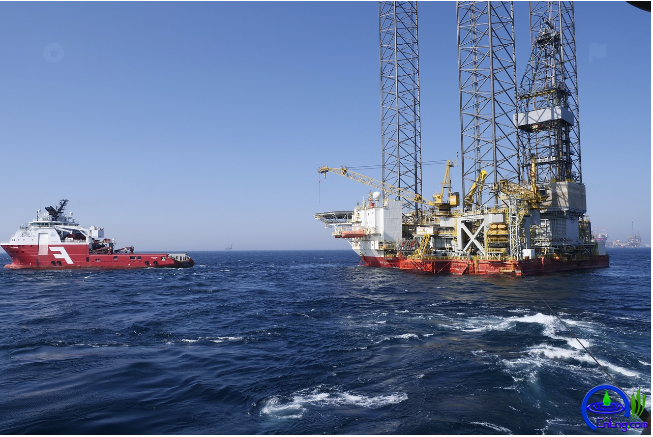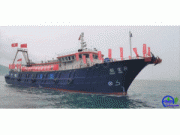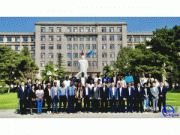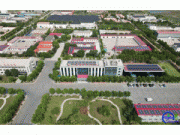免职声明:本网站为公益性网站,部分信息来自网络,如果涉及贵网站的知识产权,请及时反馈,我们承诺第一时间删除!
This website is a public welfare website, part of the information from the Internet, if it involves the intellectual property rights of your website, please timely feedback, we promise to delete the first time.
电话Tel: 19550540085: QQ号: 929496072 or 邮箱Email: Lng@vip.qq.com
摘要:密西西比州一个小镇上的造纸厂可以证明,捕捉二氧化碳排放并将其深藏于地下是否是应对气候变化的可行途径。国际纸业公司位于维克斯堡的造纸厂的拟议项目于今年2月被能源部选中,将获得高达 8800 万美元的纳税人资助。据项目背后的公司称,如果项目成功,该系统每年将..
|
密西西比州一个小镇上的造纸厂可以证明,捕捉二氧化碳排放并将其深藏于地下是否是应对气候变化的可行途径。
亚马逊是该项目的合作伙伴,它从该工厂采购集装箱纸板,用于生产纸箱和包装。前身为斯伦贝谢的油田服务巨头 SLB 正在与开发该技术的非营利组织 RTI International 合作设计碳捕集系统。 目前,碳捕集与封存技术成本高昂、物流复杂,而且在能源转型中的作用、管道基础设施扩建社区的安全问题上面临争议。 总部设在巴黎的国际能源机构将碳捕集与封存技术描述为实现全球净零排放的 "关键",同时也警告石油和天然气行业不要将该技术作为维持化石燃料现状的一种方式。一些气候活动家指责该行业只是将投资碳捕集作为延长石油和天然气使用的方式。 该技术通常使用化学吸收法来捕获工业工厂烟囱排放的二氧化碳。排放的二氧化碳被冷凝成液体,通常通过管道输送,并被储存在地下数千英尺的枯竭油井或盐水水库等地质构造中。 这项技术的实施面临巨大挑战。根据国际能源机构(IEA)的数据,到 2030 年,全球每年需要捕集超过 10 亿吨二氧化碳,是 2022 年捕集的 4500 万吨二氧化碳的 20 倍以上。据该机构称,到 2050 年,碳捕获量需要达到 60 亿吨,是 2022 年的 130 多倍。 但根据国际能源机构的数据,碳捕集与封存迄今为止的记录 "表现不佳",仅有 5%的已宣布项目达成了最终投资决策。该机构表示,在多年努力扩大部署规模之后,该行业需要证明该技术能够经济地大规模运行。 维克斯堡造纸厂项目仍处于早期开发阶段。SLB 公司碳解决方案高级副总裁 Fred Majkut 表示,SLB 公司有信心证明该项目在技术上是可行的。我们的目标是证明碳捕集与封存在经济上也是可行的,这位高管说:“碳捕集与封存的经济可行性是当今的一项挑战,因为建造大多数工厂以捕集二氧化碳的成本非常高。改造一座工业厂房的成本可能高达数亿美元。” 对于国际纸业公司来说,维克斯堡项目是为具有气候意识的消费者生产低碳产品的潜在途径,也是通过出售碳信用额度获得经济利益的潜在机会。 国际纸业公司低碳创新总监亚当-米克洛什(Adam Miklos)说:“市场上有这样的例子,客户有机会以经济的方式表达他们的偏好,无论是点击一个按钮,说他们想减少乘坐 Uber 或飞机旅行时的碳排放。” 国际纸业公司低碳创新总监亚当-米克洛斯说:“最终,它有可能减少我们的排放量,如果成功的话,还能提供出售碳信用额和可再生信用额的机会。” A paper mill in a small Mississippi town can prove whether capturing carbon dioxide emissions and storing them deep underground is a viable way to combat climate change. The proposed project for International Paper Corp. 's Vicksburg paper mill was selected by the Energy Department in February to receive up to $88 million in taxpayer funding. According to the company behind the project, if successful, the system will capture and permanently store 120,000 tons of carbon dioxide a year, equivalent to the emissions of 27,000 gasoline cars. Amazon is a partner in the project, sourcing container cardboard from the plant for the production of cartons and packaging. SLB, the oilfield services giant formerly known as Schlumberger, is designing the carbon capture system in partnership with RTI International, the nonprofit group developing the technology. Currently, carbon capture and storage technologies are costly, logistically complex, and subject to debate over their role in the energy transition and the safety of communities expanding pipeline infrastructure. The Paris-based IEA has described carbon capture and storage as "key" to achieving net zero global emissions, while also warning the oil and gas industry against using the technology as a way to maintain the status quo on fossil fuels. Some climate activists have accused the industry of simply investing in carbon capture as a way to prolong the use of oil and gas. The technology typically uses chemical absorption to capture carbon dioxide emitted from industrial plant smokestacks. The emitted carbon dioxide is condensed into a liquid, often transported through pipelines, and stored in geological formations such as depleted oil Wells or saltwater reservoirs thousands of feet underground. The implementation of this technology faces huge challenges. According to the International Energy Agency (IEA), the world will need to capture more than 1 billion tons of CO2 per year by 2030, more than 20 times the 45 million tons of CO2 that will be captured in 2022. According to the agency, carbon capture needs to reach 6 billion tons by 2050, more than 130 times the amount in 2022. But according to the International Energy Agency, carbon capture and storage's track record so far has been "poor," with only 5% of announced projects reaching a final investment decision. After years of trying to scale up deployments, the industry needs to prove that the technology can operate economically at scale, the agency said. The Vicksburg Paper Mill project is still in the early stages of development. Fred Majkut, SLB's senior vice president of carbon solutions, said SLB is confident it can prove the project is technically feasible. The goal is to prove that CCS is also economically viable, says the executive: "The economic viability of CCS is a challenge today because the cost of building most plants to capture CO2 is very high. The cost of retrofitting an industrial plant can run into hundreds of millions of dollars." For International Paper, the Vicksburg project is a potential way to produce low-carbon products for climate-conscious consumers, as well as a potential opportunity to reap financial benefits from the sale of carbon credits. "There are examples in the market where customers have the opportunity to express their preferences in an economical way, whether it's by clicking a button and saying they want to reduce their carbon emissions when they travel on Uber or by plane," said Adam Miklos, director of low-carbon innovation at International Paper. "Ultimately, it has the potential to reduce our emissions and, if successful, offer the opportunity to sell carbon credits and renewable credits," said Adam Miklos, director of low-carbon innovation at International Paper. |




 国际纸业公司位于维克斯堡的造纸厂的拟议项目于今年2月被能源部选中,将获得高达 8800 万美元的纳税人资助。据项目背后的公司称,如果项目成功,该系统每年将捕获并永久储存 12 万吨二氧化碳,相当于 2.7 万辆汽油汽车的排放量。
国际纸业公司位于维克斯堡的造纸厂的拟议项目于今年2月被能源部选中,将获得高达 8800 万美元的纳税人资助。据项目背后的公司称,如果项目成功,该系统每年将捕获并永久储存 12 万吨二氧化碳,相当于 2.7 万辆汽油汽车的排放量。












